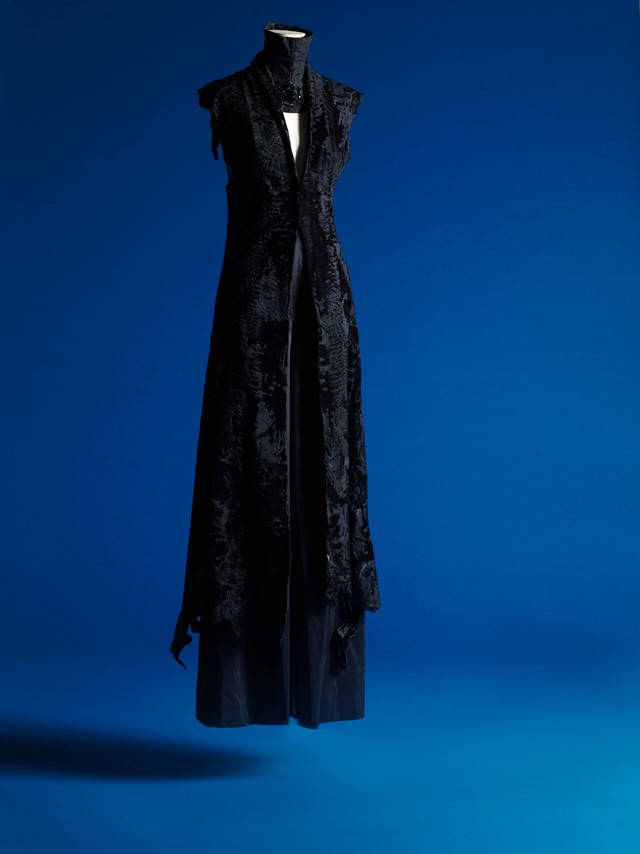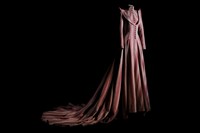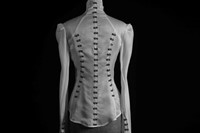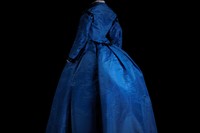As his exhibition In Praesentia opens at Calais’ Museum for Lace and Fashion this weekend, Olivier Theyskens talks about his lifelong fascination with the fabric
Olivier Theyskens, the Belgian designer known for creating rarefied, darkly romantic clothing, describes working with lace as “a habit”. The centuries-old fabric is found throughout his oeuvre: from his first collection Gloomy Trips, which featured shards of antique Chantilly lace collected by his grandmother, to his tenures at Theory, Nina Ricci and Rochas – he revived the latter’s moribund signature lace, spending seven months with a French lacemaker to make sure it was just right. And, over a decade on, at his eponymous label, where Theyskens now works solely (his most recent show in February in Paris saw balconette bodices, hook-and-eye blouses and gowns in various iterations of the fabric). “It’s always captivated me,” he tells AnOther. “It is so intimate, so feminine.”
This weekend, a new exhibition, Olivier Theyskens: In Praesentia, opens at the Museum for Lace and Fashion in Calais. The city, which sits on France’s northern coastline, is known for producing lace of all types: from abundantly detailed Chantilly to lighter-than-air French tulle, and much between – houses, such as Chanel, Valentino and Dior, all use lace from factories in the region. The museum, which itself is housed in the abandoned Boulart lace factory, collects the spoils of centuries of French lace-making: clothing, furnishings and ephemera, including the machinery and tools long used to create it. In Praesentia gave Theyskens access to the museum’s entire archive – whether on display or otherwise – asking him to weave a narrative between past and present, between his work and the numerous artefacts in the museum’s collection.
“I had just done a retrospective in at MoMu [ModeMuseum, a fashion museum in Antwerp, Belgium] when the Calais museum contacted me to do something on my work,” explains Theyskens of how the exhibition began. “I never thought I’d do another exhibition, but I was interested because they talked about a new approach – at MoMu it was very chronological, a reflection, show after show after show of what I did – but here, they were interested in my creative process, and work with lace. They gave me carte blanche to do whatever I liked with their collection; to start a conversation between past and present.”
The resulting exhibition is what the designer deems an “emotional” experience, an attempt to replicate the visceral appeal of the fabric itself. “Lace has always captivated me, even when I very young. That sexy side of lace – like lingerie – and how most lace was always hidden,” he says. “When I was growing up my grandmother used to collect little bits of antique lace offcuts for me, and since I have always used it in my collections.” In Praesentia, then, diverts from typical exhibitions on a designer’s work – instead, it is a series of reveries from Theyskens on various themes, the colour black, illusion, nostalgia and the corset among them.
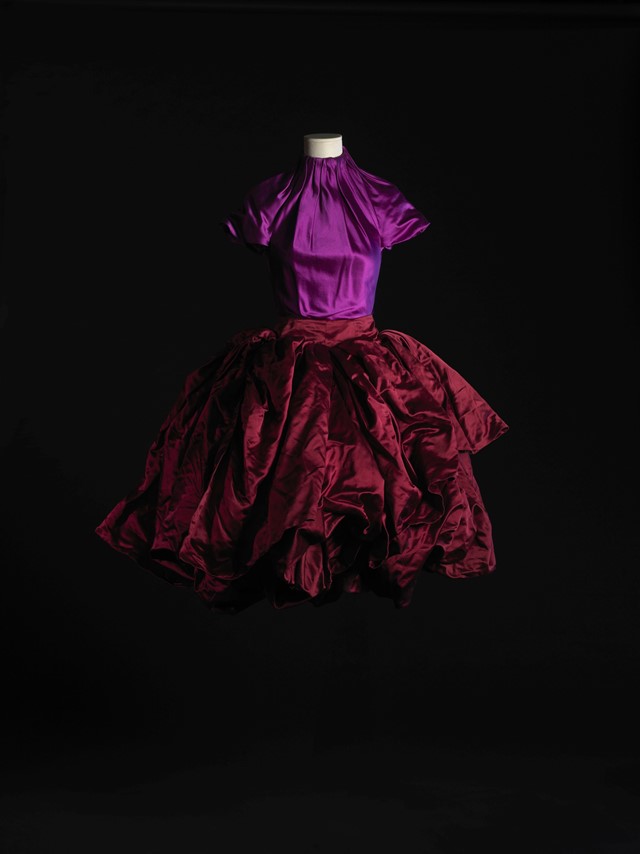
One new, unexpected fascination Theyskens discovered was with the machinery of lace production itself: in the exhibition, mannequins might balance on old worker’s stools; bobbins and boxes might be stacked alongside a towering heelless boot, designed by Theyskens while at Nina Ricci. “I found myself interested in some of the pieces connected to the activity of making lace: the furniture, tools,” says the desinger. “When I was working at Rochas, and I would go to the factories, I was overwhelmed by the environment. The lace is very delicate, very intricate, subtle, fragile, meticulous, and the environment is extremely brutalist: the machines are very heavy, very ancient, there is a lot of noise, it is very dusty, and I kind of like this contrast.”
It is a contrast he has struck in his own work, too, where clothing often teeters somewhere between brutality and beauty: his early collections hinge on just this, combining the excess of 17th- and 18th-century costume with industrial elements – like the hook-and-eyelet fastening, one of his signatures – or fetishistic understones – gimp masks, leather, severe corsetry and the like. Theyskens’ own renown came on the back of Madonna – another artist astute at balancing brutality and beauty – who wore a corseted yellow Theyskens gown for the VH1 Fashion Awards in 1999, taken from only his second collection. Hook-and-eyelet fastenings criss-cross the satin skirt, like it has been slashed apart, and stitched back together.
“I think a lot has changed since then, we were never thinking about creating content,” Theyskens says of that moment. “The fashion world was a lot smaller, we were working with people who we knew, who were experts. But I like change, I never thought that the industry wouldn’t move on: I love that in the history of 20th-century fashion, there are such big changes between the 1950s and 60s, the 60s and 70s, the 70s and the 80s; the reappearance of designers, the disappearance of others. It’s always been about change.”
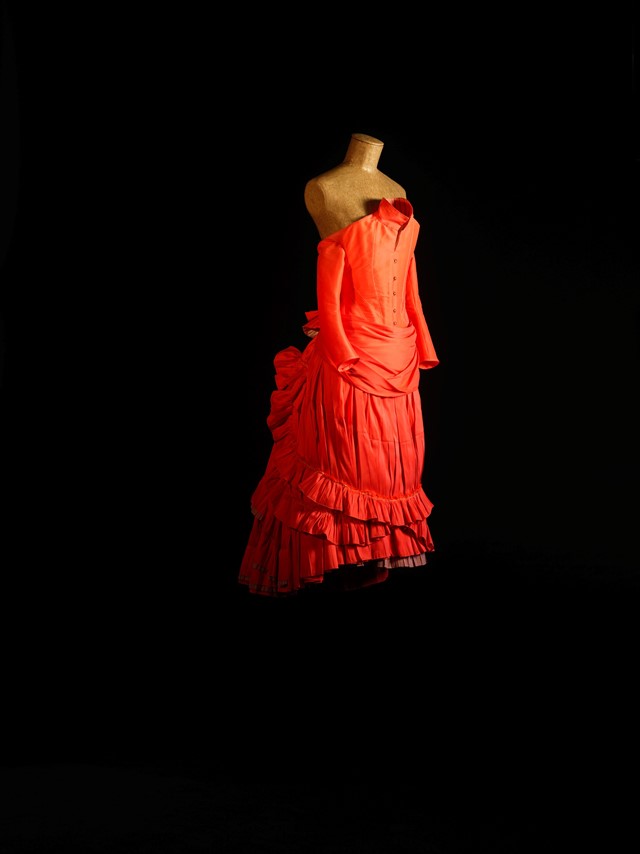
Change might be on Theyskens’ mind, but an exhibition like this provides a chance for a designer to take stock, and look back: Theyskens recently rearranged his archive, which had previously been in storage in Belgium and not looked at for many years. Within it, he discovered a wealth of pieces that even he didn’t immediately recognise, including several garments which, for one reason or another, did not make it into the final runway collection for a given season. Some of these will appear In Praesentia: “I’m always pressured when I put collections together to take out things that don’t quite fit in the story; [with this exhibition] I’m happy to work in a way which isn’t just about ‘full looks’ or collections,” he says.
Such an approach makes the range of In Praesentia far wider than a typical retrospective: instead, it provides a brief journey into the frenetic, resourceful workings of a creative mind. “It’s a dialogue between past and present, between new and old ways of working, of nostalgia and craft,” Theyskens says. “When I make or put things together I draw on emotion, or feeling. Sometimes, I want to put the intellect aside.”
Olivier Theyskens: In Praesentia is on at Museum for Lace and Fashion in Calais, France from 15 June, 2019 – 5 January, 2020.
